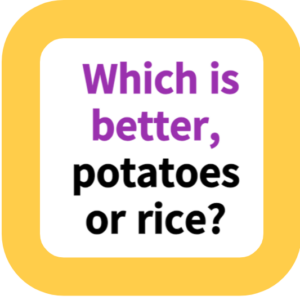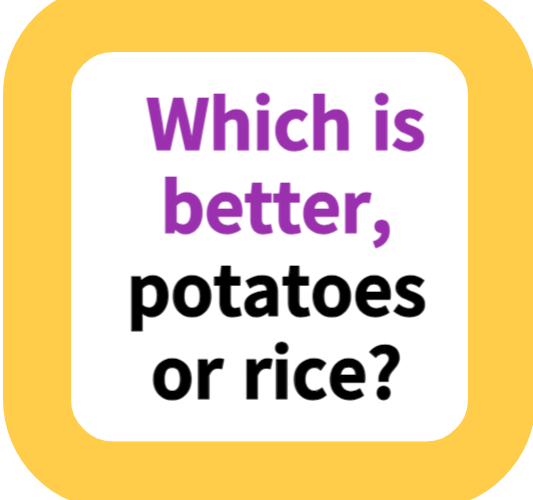Which is better, potatoes or rice?
Hello and welcome to “The plate debate: potatoes or rice,” where we dive deep into the heart of staple foods that grace dining tables worldwide. In this blog, we embark on a comprehensive journey to explore the nutritional nuances and culinary diversity of two food staples – potatoes and rice.
Our mission is to dissect their nutritional profiles, assess their health implications, and celebrate their versatility in cooking. Whether you’re a home cook, a nutrition enthusiast, or someone curious about making healthier dietary choices, this is your go-to resource for understanding how these staples fit into a balanced diet.
Which is better, potatoes or rice?

Introduction: Potatoes vs. Rice – A Nutritional and Culinary Showdown
In the world of staple foods, potatoes and rice hold prominent positions. They are fundamental to various diets across the globe and play a key role in nutrition and culinary practices.
This comprehensive analysis aims to unravel the nutritional intricacies of potatoes and rice, evaluate their health implications, and explore their culinary diversity. By comparing these two staples, we seek to provide a clearer understanding of their role in a balanced diet, helping individuals make informed choices based on their dietary needs and preferences.
Nutritional Profiles: A Detailed Look
Potatoes: A Nutrient-Dense Choice
Potatoes, beyond being a source of carbohydrates, offer a wealth of nutrients. They are high in vitamin C, essential for immune function, potassium crucial for heart health, and B-vitamins necessary for energy metabolism.
The fiber content in potatoes, especially when eaten with the skin, aids in digestion and prolongs satiety. Different cooking methods can affect their nutritional value, with baking and boiling being healthier options compared to frying.
Rice: An Energy-Providing Staple
Rice, particularly brown rice, provides a rich source of complex carbohydrates, essential for sustained energy release. It is a low-fat option, containing vital nutrients like magnesium and selenium, especially in its whole-grain form. White rice, often consumed for its softer texture and neutral flavor, is usually enriched with vitamins and minerals to balance its nutritional profile.
Health Implications and Dietary Considerations
Dietary Restrictions and Health Goals
For those with gluten intolerance or celiac disease, both potatoes and rice are excellent gluten-free options. However, for individuals managing diabetes or blood sugar levels, brown rice with its lower glycemic index may be preferable over potatoes.
The Role in Weight Management
In weight management, the fiber content of potatoes can be beneficial for feeling fuller for longer. Conversely, the caloric density of rice should be considered, making portion control important for those monitoring calorie intake.
Culinary Versatility and Usage
Potatoes in the Culinary World
The versatility of potatoes in cooking is vast – they can be boiled, baked, mashed, or roasted. Potatoes can be a hearty component in stews, a comforting element in mashed form, or a crispy side as roasted wedges. Their ability to absorb flavors makes them a favorite in various culinary traditions.
Rice: A Global Culinary Staple
Rice is integral to numerous cuisines around the world. It forms the base of dishes like sushi in Japan, paella in Spain, and pilaf in the Middle East. Its ability to complement a wide range of flavors and ingredients makes it a global favorite. Additionally, rice’s suitability in both savory and sweet dishes adds to its culinary appeal.
Conclusion: Balancing the Scales – Potatoes and Rice in Your Diet
In conclusion, both potatoes and rice have their unique place in a balanced diet. The choice between them should be based on individual nutritional needs, health objectives, and personal taste preferences. Potatoes offer a rich array of nutrients and a sense of satiety, making them ideal for nutrient-focused diets.
Rice, especially in its whole-grain form, provides sustained energy and is a versatile culinary ingredient. By understanding their distinct nutritional benefits and culinary uses, individuals can enjoy the diversity and richness these staples bring to the table, making meals both nutritious and enjoyable.
In the end, a varied diet that includes both potatoes and rice, prepared in healthy ways, can contribute to overall well-being and culinary satisfaction.
